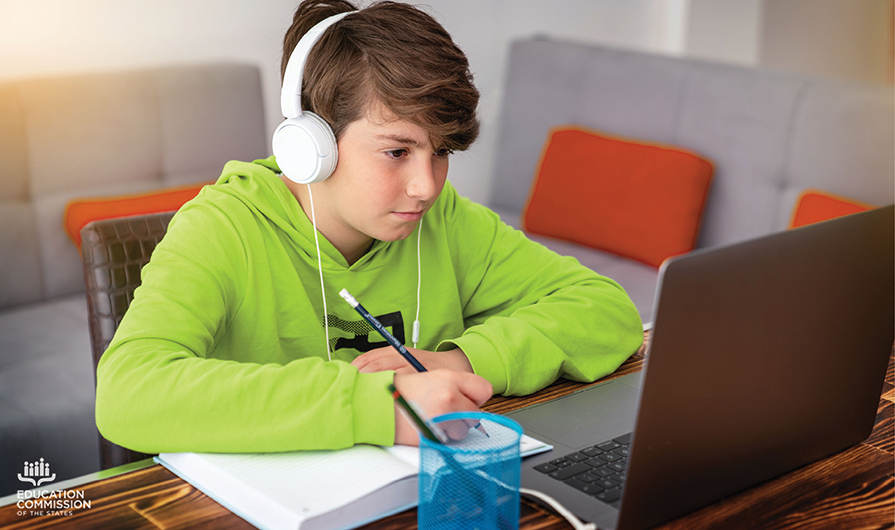All over the country, states, districts and task forces of every sort are wrestling with the question of how to safely reopen schools. This scenario planning is daunting, as schools must navigate a minefield of health, safety, legal, and instructional issues, and do so blindfolded by ever-changing and imperfect understanding of the virus itself. The newly released guidance from the Centers for Disease Control and Prevention (CDC) is helpful as far as it goes, but also makes it clear that key decisions will be made locally.
The most urgent priority for school districts as they prepare for the fall is to offer families and educators a way to continue learning, and teaching, at home. And state policymakers can take several concrete steps to help make that happen.
A remote learning option remains critical for two big reasons. First, and most important, state and local officials must protect children, educators and family members at risk of serious illness — or worse — from the coronavirus. No school can guarantee that someone won’t be infected while in its facility — even schools that follow the CDC guidance to a T. The goal of various safety measures is to keep contagion to a minimum — and avoid any “super spreader” events — not to reduce to zero the risk of transmission. Parents should not be asked to put their sons and daughters in harm’s way if they have underlying health conditions, or might bring the virus home to a family member who does. And leaders shouldn’t ask at-risk educators or staff to do so either. Yet without remote learning options, truancy laws and employment contracts will require kids and faculty to be at school, despite the health and safety hazards.
The second big reason to make learning from home a continuing option is because it will give schools the space and resources to allow social distancing for kids who do return to campus. The CDC guidance suggests that student desks be spaced six feet apart, for instance. That’s not going to work with 25 to 30 students packed into normal-sized classrooms. Schools will need to spread their students out, which requires a lot more space and staff than most have access to. That’s why many districts are considering having students attend school physically every other day. (Allowing for social distancing on buses is another reason.)
But if lots of families choose to keep their kids at home every day, social distancing in school becomes far easier, and might allow other students to attend more often. That’s particularly important for youngsters with disabilities, English language learners or children who are far below grade level.
Now for the hard part: designing state policies that encourage plenty of parents to continue with remote learning full-time but don’t make district budget shortfalls even worse than they already will be. Consider what would happen if thousands of parents formally withdrew their kids from school and signed up for home-schooling or enrolled in virtual charter schools (in states that have them). Under most state funding policies, districts would lose millions of dollars. On the other hand, parents shouldn’t be asked to stay enrolled in traditional public schools if their home districts are not offering effective remote learning programs.
State policymakers can take action on two fronts. First, they could work to support districts’ own remote learning programs by investing in technology, curricular resources, professional development and more. (Thankfully, federal funding via the CARES Act and other stimulus bills is available for these activities.) Second, they could expand the capacity of high-quality virtual schools by lifting enrollment caps and hold districts financially harmless for students they lose to these options, at least until there is a vaccine. Granted, that will take extra money too, as it means paying twice for the same students. (They might also find ways to allow at-risk educators to work for these virtual schools, perhaps by facilitating contracts between their home districts and the online schools.)
Nothing about this coronavirus crisis is easy. But with some initiative and ingenuity, states can help social distancing at schools go a whole lot better next year. The first step is to make remote learning a whole lot better, too.





